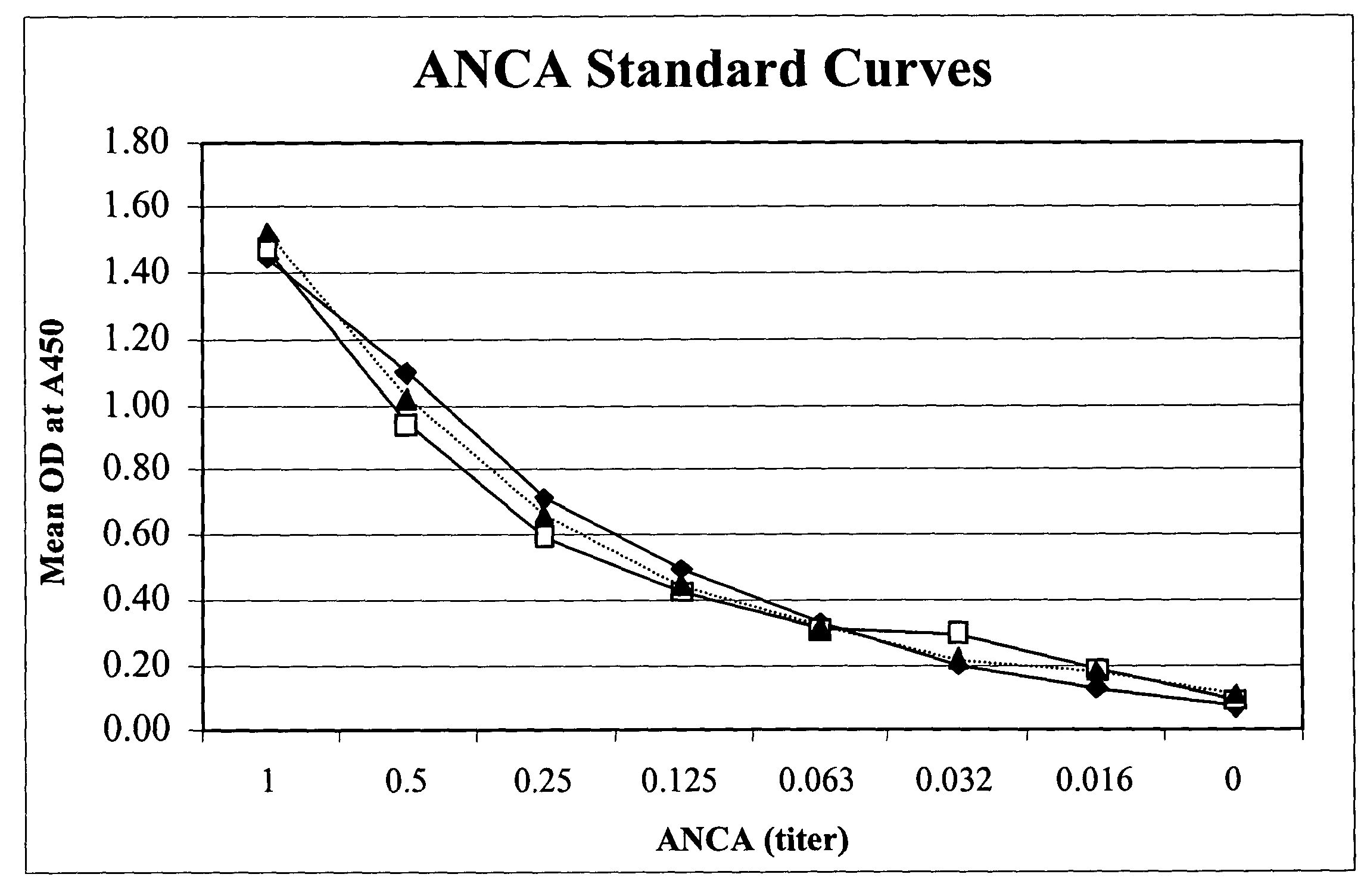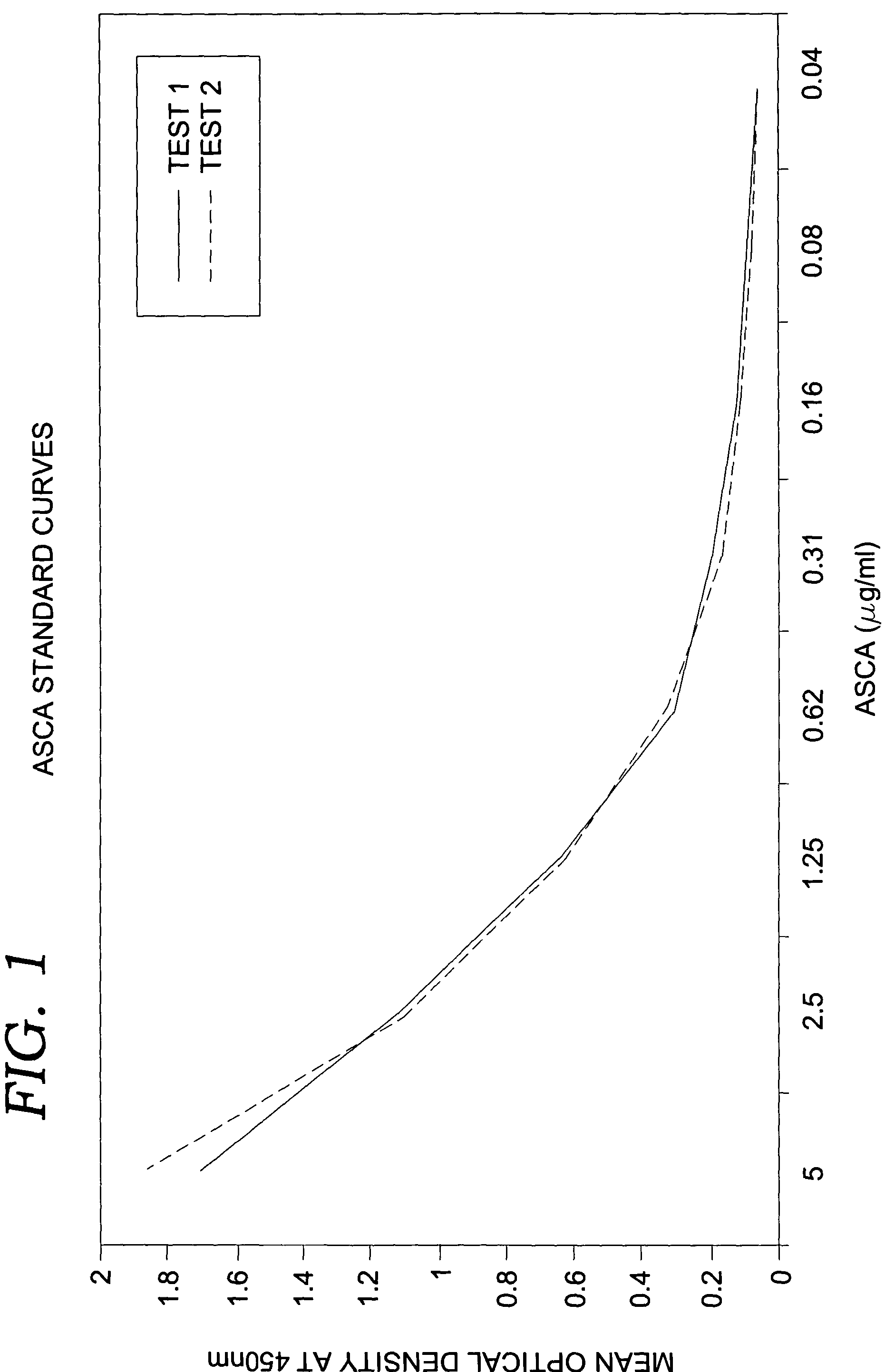Inflammatory bowel disease and irritable bowel syndrome IBD-first chek diagnostic panel
a technology for inflammatory bowel disease and irritable bowel syndrome, which is applied in the direction of material analysis, biological material analysis, instruments, etc., can solve the problems of difficult to distinguish patients with active ibd from severe and often debilitating abdominal pain, and patients with active ibd who exhibit mild signs and symptoms
- Summary
- Abstract
- Description
- Claims
- Application Information
AI Technical Summary
Problems solved by technology
Method used
Image
Examples
example 1
Lactoferrin Qualitative Assay
[0017]a. Establishment of Optimal Sample Dilution Factor and Optical Density
[0018]The assay of the present invention was designed and developed to detect levels of fecal lactoferrin at a lower level detectable by predicate devices, specifically the LEUKO-TEST®. The lower limit of detection of the LEUKO-TEST® is 256 ng / mL with purified human lactoferrin. In the LEUKO-TEST®, a specimen dilution of 1:50 and a minimum limit of detection of 256 ng / mL provides a lower limit of detection in fecal specimens of approximately 12 μg / mL. A specimen dilution of 1:400 and a minimum detection limit for the assay of the present invention of 32 ng / mL also provides a lower limit of detection in fecal specimens of approximately 12 μg / mL. Accordingly, a 1:400 specimen dilution was chosen for the assay of the present invention. Similarly, an optical density of 0.200 OD450 for the assay was chosen. (As used herein, OD450 indicates an optical density obtained spectrophotometri...
example 2
Lactoferrin Quantitative Assay
[0071]In the quantitative assay of the present invention, fecal specimens preferably are serially diluted ten-fold and added to microtiter wells containing immobilized polyclonal antibodies against human lactoferrin. If endogenous lactoferrin is present, it will bind to the antibodies during an incubation at approximately 37° C. Following the incubation, conjugate comprised of polyclonal antibodies coupled to horseradish peroxidase enzyme is added and allowed to bind to captured lactoferrin. Unbound conjugate is then washed from the well and a component substrate (e.g., tetra-methyl-benzidene and hydrogen peroxide) is added for color development. Following the substrate incubation, 0.6N sulfuric acid is added to quench the reaction and the absorbance or optical density (OD) is obtained spectrophotometrically at 450 nm on a single wavelength device. Fecal lactoferrin concentrations are determined by comparison to a standard curve generated using purified...
example 3
ASCA Assay
[0082]In this example, a fecal sample was obtained and serially diluted 20 fold. 100 μl of the diluted sample was added to a test well of a microassay plate coated with extract of Saccharomyces cerevisiae. The sample then was incubated at 37° C. to allow antibodies to Saccharomyces cerevisiae to bind to the extract of Saccharomyces cerevisiae. Following incubation, anti-human Ig polyclonal antibodies coupled to horseradish peroxidase enzyme (conjugate) were added to the test well and allowed to bind to captured ASCA. Unbound conjugate then was washed from the well and one component substrate (tetra-methyl-benzidene and hydrogen peroxide) was added for color development. Following the substrate incubation, 0.1M sulfuric acid was added to quench the reaction and the optical density (OD) was obtained spectrophotometrically at 450 nm using a single wavelength spectrophotometer.
[0083]The method described above was used in a clinical study to test a total of 86 IBD patients (55....
PUM
 Login to View More
Login to View More Abstract
Description
Claims
Application Information
 Login to View More
Login to View More - R&D
- Intellectual Property
- Life Sciences
- Materials
- Tech Scout
- Unparalleled Data Quality
- Higher Quality Content
- 60% Fewer Hallucinations
Browse by: Latest US Patents, China's latest patents, Technical Efficacy Thesaurus, Application Domain, Technology Topic, Popular Technical Reports.
© 2025 PatSnap. All rights reserved.Legal|Privacy policy|Modern Slavery Act Transparency Statement|Sitemap|About US| Contact US: help@patsnap.com



